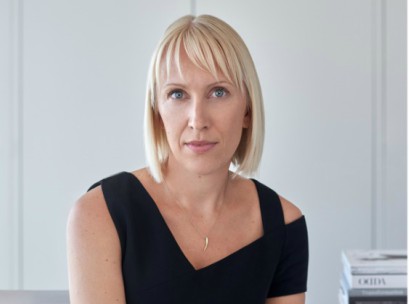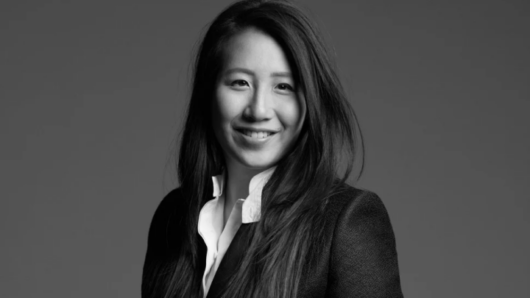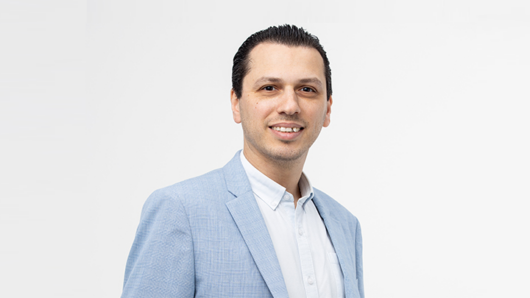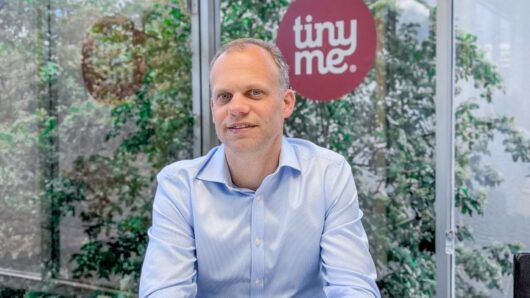 With a résumé that includes stints in digital and customer experience roles at Net-A-Porter, Topshop parent company Arcadia Group, Selfriges department store and Matchesfashion.com, Emma Mortimer is more qualified than most to talk about the art and science of selling fashion online.
With a résumé that includes stints in digital and customer experience roles at Net-A-Porter, Topshop parent company Arcadia Group, Selfriges department store and Matchesfashion.com, Emma Mortimer is more qualified than most to talk about the art and science of selling fashion online.
Now, as managing director of The Outnet, the Net-A-Porter sister site that sells discounted luxury and designer fashion, she is putting that experience to good use to grow the online retailer’s global reach.
Mortimer was recently in Australia to hear from The Outnet’s existing customers and introduce the website to new customers ahead of its 10th anniversary celebrations in May, and spoke to IRW about the evolution of online luxury over the past decade.
In this interview, she shares how The Outnet continues to differentiate amid increasing competition, why brands are no longer concerned about ‘devaluing’ their product by discounting or selling online and how Australia has become a top five market for the e-commerce company.
Inside Retail Weekly: With The Outnet celebrating its 10th anniversary this year, what are some of the biggest changes you see in the luxury online landscape today compared to 2009?
Emma Mortimer: I think it’s fair to say the landscape has evolved hugely since 2009 when The Outnet launched and 2000, when our sister site Net-A-Porter launched. It’s a completely different landscape now in the sense that online shopping is the norm. Everyone has some sort of online presence, and people are so used to shopping online now that it’s completely commonplace to purchase everything from your groceries, to high-price-point luxuries like fine jewellery to extremely high-value dresses online. The highest-value dress we’ve been stocking is $14,000, and customers are completely happy to purchase an item like that online.
The other thing is the pace at which everything is moving now, with smartphones and social media – there’s so much access, so much variety, so much ease about it. In the past we’d see a spike around lunch hour; women would go online and start shopping at lunch time. And now it’s fairly constant. Being a global business, we see spikes when people wake up, when they’re commuting to and from work. You look around on the train and everyone’s on their phone and they’re all shopping. That’s the kind of landscape we’re looking at now.
IRW: Have you seen that translate into a difference in sales for The Outnet, as people become more comfortable shopping online and spending more online?
EM: Our customer base grows year on year. The challenge for us is on retaining our customers and finding new customers. That’s something we’re constantly seeking to do. Customers have certainly become that much more familiar with how to shop online, what they need to look for, their size measurements, so they’re purchasing more units. Our average order value is really strong, and the frequency of orders is increasing as well.
We’re meeting all our customers in market now, and it’s amazing to talk to them. They’re so passionate and literally shop every upload. When we launched we were putting new products on the site just two days a week, and we’re now uploading five days a week, and customers are coming [on The Outnet] every morning. It’s part of their ritual: they get up, have their coffee and come on our site just to see what’s there.
From our perspective, it’s also the service we offer the customer. We now ship to over 100 countries, we’ve got 24/7 customer care, we offer styling advice to them, we’ve got live chat available, we speak 14 different languages. We service a global customer; they’re so much more comfortable because we’re trusted and reliable.
IRW: The online luxury space has become a lot more crowded since The Outnet first launched, both at the full-price and discount end, with the rise of secondhand luxury platforms like The RealReal and Vestiaire. How do you continue to differentiate?
EM: There is a lot more competition now than there was 10 years ago, from all different aspects, from the full-price business that seems to spend a lot more time on sale now, to the pre-loved/pre-owned, to the rental markets, to the mono-brands that are doing their own thing – it’s everywhere. So I think we have to stay true to the values of what we’re all about, which is fantastic products, great service and great prices.
So what we have now is an amazing in-house buying team that really operates more like a full-price business. They’ll go out to market, go to the shows. They’ve built such phenomenal relationships with the designers that we can get our hands on fantastic products, and at the same time create exclusive collaborations with them that our customers are loving. We’re doing one of our biggest ones this year for our 10-year anniversary, and that’s really down to the relationship we have with designers. And, therefore, we can offer such a selection and fantastic array – it sets us apart – and obviously the service aspect as well.
IRW: A lot of brands fear ‘devaluing’ their offerings by selling online, or by discounting. What’s your take on this? And what are your conversations like with the brands/retailers you’re trying to get on The Outnet?
EM: I think that was the case back in the day. When Net-A-Porter first launched, I think it was hard to convince designers and brands that selling online wasn’t going to be detrimental to their brand and that they shouldn’t worry about it. But now we don’t really have to have those conversations anymore, and buyers don’t have to sell The Outnet to the brands; they get it.
Actually we’re really helping brands now, because it’s hard to know how much to produce and what sales are going to be like. We offer a service that’s really helpful in extending the lifecycle of that product. We can take that product and recreate it, curate it, and it sits on our brand, which we’re very proud of, and it certainly isn’t detrimental to their brand to be associated with us. It’s just reassuring them about that.
And what we offer is the ability to extend their reach; we have a global customer base. And from that perspective, we’re in a great position to work with brands.
IRW: But given what we saw last year with Burberry – where they perhaps unintentionally lifted the lid on the practice of luxury brands destroying products, rather than discounting them, to preserve their value – isn’t this still an issue?
EM: It’s down to the individual brands what they do, so I won’t comment on that, but we have such a good relationship with the brands that we work with that we reassure them. Perhaps because we’re a luxury environment ourselves, there’s no question mark over that [issue of devaluation], and more and more brands are realising that.
We certainly are having fewer conversations around that. What we’re able to offer so many brands is an opportunity to extend the lifecycle of their products and sell them to customers who love them and aren’t necessarily concerned with the latest trends and seasons. The quality is there and they love the brands themselves and are happy to purchase the previous season.
IRW: You mention one of the differentiators of The Outnet is its global customer base, and I know Chinese consumers make up a huge share of the global luxury market. What portion of your customers are coming from China versus the rest of the world? And how does this impact your decision-making?
EM: Our customer is very global; she spreads across the UK, Europe, US, Asia, but we are seeing phenomenal growth in APAC – so Hong Kong, mainland China and Australia, which is one of our top five markets. I think it’s growing at this pace because there’s less variety accessible in Australia close to hand, and consumers are realising they can easily purchase online from elsewhere and get it really quickly.
This whole region is really important for us, and when it comes to how we operate and what our strategy is, we’re supporting that growth. We replatformed just over a year ago to support more localisation and more globalisation, so now we have an Arabic website in the Middle East and a Japanese website. We’re in a position to really bounce off that new platform and we’re continuing to look at ways of expanding and reaching a global customer.
IRW: Just to clarify, is Australia a top five market, or APAC more broadly?
EM: Australia. It’s been growing and becoming more and more prominent over the past few years, but it’s been in the top 10 at least for several years.
IRW: Besides the replatforming, have you done anything like set up new distribution centres to aid the speed of delivery, which is so crucial for e-commerce?
EM: Logistics operations are absolutely at the core of an online business. We relocated all of our inventory to Italy, so it now sits there and goes out from that main hub across all markets, and we have another warehouse in the US. So we have two inventory holdings, that are in a prime position to get across to Asia and to Europe as well.
IRW: What is the goal of your visit to the Australian market? To better understand the customer, speak with brands?
EM: This is a marketing trip; we have a buying team that comes separately to speak to brands. So we’ve had a number of media interviews and a number of customer activities and a panel with Future Women to introduce our brand to new customers as well. The purpose of the trip is to get to know everybody and to highlight the fact that we’ve got our 10th anniversary launching in May this year, which is celebrating the great relationships we’ve had brands over the years, which will feature collaborations with five designers and 90 products, which we’re super excited about.
IRW: I know you worked as a consultant in the modest fashion space at The Modist, and I’m really interested in hearing your thoughts on what’s driving that trend, and where you think it will go next?
EM: It’s a really interesting shift taking place I think. Certainly my time with The Modist was enlightening because I was fairly ignorant about it at the time, but modest fashion is not purely in the Middle East or the UAE, it’s a choice. It’s a choice women are making now with how they want to dress. It’s not necessarily religious-based or cultural per se, it’s actually just how they choose to dress. Some of them may choose to be that much more demure and covered up, and they see that less is more in that sense. From The Outnet’s perspective, we’ve got to make sure that what we offer our customer is so broad, and we seek an audience with anyone and everyone, so we try to cater to all forms of products, so that we are serving anyone who wants to shop with us. I don’t see modest fashion slowing down, I see it continuing. It’s just variety and choice at the end of the day, and being free to be who you want to be.
IRW: I wonder if you think the growth of modest fashion has anything to do with an increase in women in decision-making roles in fashion? To put it bluntly, perhaps the decisions that men make about women’s fashion are different from the decisions women make?
EM: I think it’s about flexibility and the fluidity being enabled and appreciated and allowed now in the workplace and society more broadly. Women can comfortably wear trousers in the office; they don’t have to wear a skirt to be feminine.
IRW: What are some of the big changes in the luxury e-commerce space on your radar at the moment?
EM: I think with anything, it all comes down to technology; you’ve got to keep your eye on all of that and the way it’s shifting and moving from the data side to how customers are searching, whether it’s visual or voice search. We brought in chatbots with Facebook recently and augmented reality; we’re testing the water in those areas. It’s about keeping up with technology but keeping the customer in mind, so you’re always focused on what’s actually going to support the customer and help the customer. You can’t get overexcited; you’ve always got to bring it back to the customer.
A huge amount is happening in the tech space, and that will continue to evolve, but fundamentally, as it becomes more competitive, you’ve got to come back to basics. It’s about building that trust with the customer. It’s become more and more important to have clear values and a purpose and to connect with the customer on a more human level. So you need to bring in both aspects – the human aspects and the data and science aspects – and hope that together they culminate in something fantastic. It’s hard to see the future in that area because it’s evolving so quickly.





